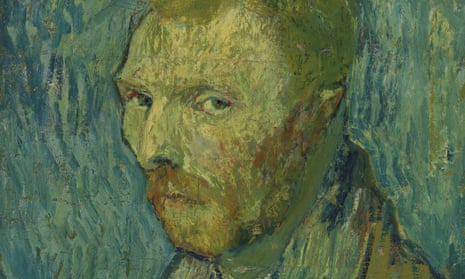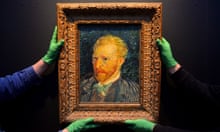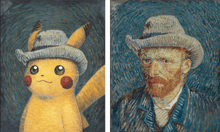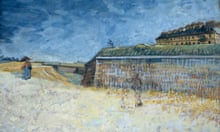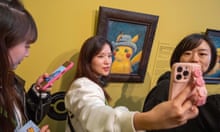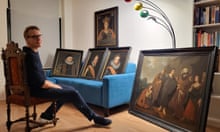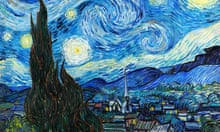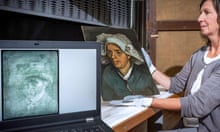After decades of doubt, a gloomy self-portrait has been authenticated as a genuine work by Vincent van Gogh and the only known work painted while he had psychosis.
Self-Portrait (1889) has been in Norway’s national collection since 1910 but its authenticity has been openly questioned since 1970. On Monday, the Van Gogh Museum in Amsterdam announced it was “unmistakably” a work by the artist.
In the portrait, dated August 1889, the artist’s expression is lifeless and the image is dominated by a dreary and downbeat greenish-brown tone.
“The Oslo self-portrait depicts someone who is mentally ill,” the museum said. “His timid, sideways glance is easily recognisable and is often found in patients suffering from depression and psychosis.”
Van Gogh admitted himself to a small asylum in Saint-Rémy, France, in May 1889 and was struck down by a severe psychotic episode in July that lasted for a month and a half.
The painting can be linked to a letter that the artist wrote to his brother Theo in September, about a self-portrait “attempt from when I was ill”.
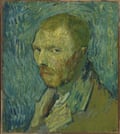
Louis van Tilborgh, a senior researcher at the museum and professor of art history at the University of Amsterdam, said Van Gogh was frightened to admit he was in a similar state to other residents at the asylum.
“He probably painted this portrait to reconcile himself with what he saw in the mirror: a person he did not wish to be, yet was,” he said.
“This is part of what makes the painting so remarkable and even therapeutic. It is the only work that Van Gogh is known for certain to have created while suffering from psychosis.”
The Nasjonalmuseet in Oslo purchased the painting in 1910, making it – in theory – the first Van Gogh self-portrait to enter a public collection. But because of an incomplete provenance and questions over its style and use of colour, some experts doubted its authenticity.
The Nasjonalmuseet asked the Van Gogh Museum to undertake a comprehensive inspection of its style, technique, material and provenance in 2014, and it is the results of these investigations that were revealed on Monday.
Mai Britt Guleng, a curator at the Nasjonalmuseet, said it was reassuring the painting had been confirmed as genuine.
“When we delivered the painting in ‘14 they warned us and said ‘you might not like the results’ and it might be that we will never find out. So we were very happy when we got the news.”
One reason for previous doubts about the work’s authenticity was Van Gogh’s use of a palette knife to flatten parts of the painting, thought to be unusual. “It’s not,” said Van Tilborgh. “He uses it often and there is another picture where he has used it to suppress the liveliness of the surface, it’s only strange that he has used it for the face.”
Van Tilborgh believes the artist was trying to deliberately drain the life from the portrait and that reflected his state of mind. “He attached much more value to getting something which was intensely expressive,” he said.
“This is not the best picture that Van Gogh made but I have grown quite fond of it. He says later on somewhere that his paintings were sometimes a cry of anguish. Well, this is a cry of anguish. It belongs to a small group of pictures that show something of his mental health problem and how he dealt with it, or tried to deal with it.”
Van Gogh would have been looking in a mirror as he was painting so the ear in view is his right one, not the one he famously severed with a razor blade in December 1888. The ear in the Oslo painting is vague and presumably deliberately so.
Van Gogh wrote on 22 August 1889 that he was still “disturbed” but felt able to paint again. The newly authenticated self-portrait was followed in the following three weeks by two famous and much more vibrant self-portraits, which are in the National Gallery of Art in Washington DC and the Musée d’Orsay in Paris.
Seen together, the portraits show a man gradually becoming less fragile, although it was not to last. Within a year he was dead, aged only 37, after he shot himself in an apparent suicide.
The painting is on display at the Van Gogh Museum and will be part of a temporary exhibition, titled In the Picture, from 21 February. It will then return to Oslo to be displayed as part of the Nasjonalmuseet’s permanent collection when a new building opens in spring 2021.
